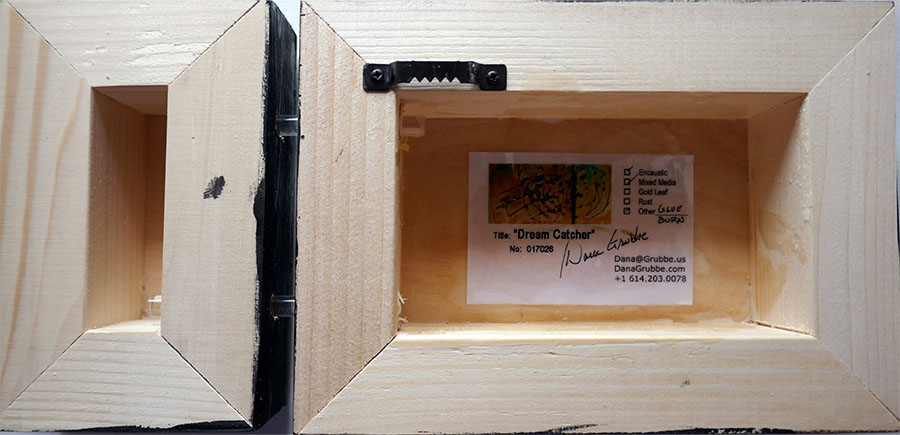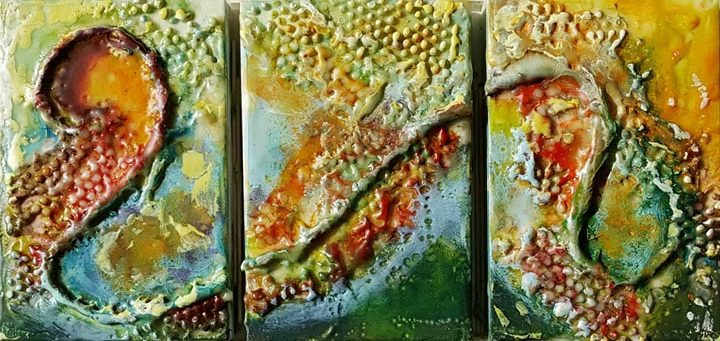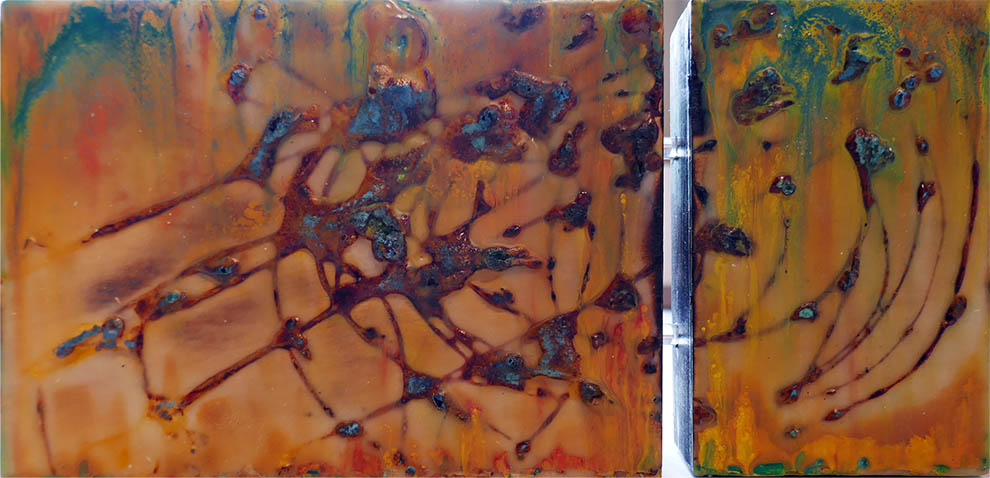Polyptych? When I first started working a little larger I found it almost natural to want to connect two or three small panels together to create a larger surface. The concept of multiple panels is not new. In the early Middle Ages such panels were held together by hinges and of course were most often designed as altarpieces. Paintings divided into multiple panels are called polyptychs, or depending on the number of parts a diptych, triptych, etc.
Keeping it together: I’m an artist, when I make something I have an opinion, when I make something that spans more than one surface I have a working concept of how the pieces go together and even, which side I think is up (my sister-in-law, Jeanne Martin, confesses she disagrees and hangs one of her encaustics “upside down”). And even if someone wants to hang your pieces as you envision, figuring out how to make it easier has been a subject for deep thoughts. Luckily, one of the students in my on-line encaustic workshop shared a piece held together with 1/4″ plastic rods. If you look at “Dream Catcher” in the photo above, with the sunlight streaming behind it, you can see the rods, but hanging on the wall they are much less obvious.
Balancing: The picture below on the left shows the back of “Dream Catcher”. Note the placement of the sawtooth hanger… it has to be placed at the balance point. For other pieces, such as the triptych “Atoll” (below center), the hanger will naturally be in the center piece. “Dark Woods (watching me)” on the right is also a diptych but I have chosen to hang the pieces separately. The accompaning label specifies ‘right’ and ‘left’ but it is up to the owner to determine final placement.




